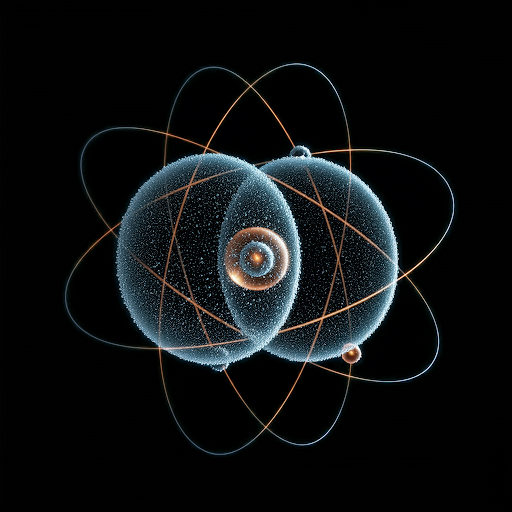
Quantum Biology: A New Frontier in Understanding Life
We are really getting out there — but for the sake of health, fitness, and longevity, it’s worth exploring how physics meets biology.
Quantum Biology and Clarice D. Aiello
Clarice D. Aiello, assistant professor at UCLA and director of the Quantum Biology Tech Lab, investigates how quantum phenomena — particularly electron spin — may influence living systems. This field, known as quantum biology, explores how quantum mechanics could explain and harness processes in cells and tissues.
Quantum Mechanics and Its Role in Biology
Quantum mechanics governs atoms and molecules, where unusual effects occur that classical physics can’t describe. These include:
- Electron tunneling: Electrons cross barriers that should be impenetrable under classical physics — critical in enzyme catalysis and photosynthesis.
- Superposition: Particles exist in multiple states until measured — fundamental to quantum coherence seen in photosynthetic complexes.
For years, scientists assumed the “warm, wet” cellular environment destroyed quantum coherence. Yet, research in biophysics and chemistry now demonstrates quantum effects even in biological molecules like proteins and DNA.
Studying Quantum Effects in Living Systems
Aiello’s team develops tools to measure and manipulate electron spin–dependent reactions in biological settings. Electron spin determines how electrons align in magnetic fields — a property that appears to influence chemical reaction rates and even cellular function.
Weak magnetic fields, at strengths comparable to the Earth’s field, have been shown to modulate stem cell growth, DNA repair, and oxidative stress responses. By altering spin alignment, researchers believe they can influence biochemical reaction yields — an emerging paradigm with potential medical applications.
Evidence from Migratory Birds
One of the strongest arguments for quantum biology comes from navigation in migratory birds. The Schulten hypothesis (1978) proposed that birds detect magnetic fields through spin-dependent chemical reactions — essentially a biological quantum compass.
Cryptochrome: Nature’s Quantum Sensor
The photoreceptor cryptochrome is a likely candidate for this mechanism. Found in the eyes of birds, insects, and mammals, cryptochrome helps regulate circadian rhythm and may enable magnetoreception. When activated by blue light, its flavin adenine dinucleotide (FAD) cofactor undergoes reactions dependent on electron spin state. Applying weak magnetic fields alters the protein’s fluorescence — direct evidence of spin sensitivity at room temperature.
Beyond Cryptochrome: Cellular Sensitivity to Magnetic Fields
Magnetically sensitive reactions are not limited to cryptochrome. Research indicates that weak magnetic fields (1–100 µT) can influence mitochondrial respiration, glycolytic flux, and stem-cell differentiation. These effects likely arise through spin-correlated radical pairs within key enzymes and flavoproteins.
Why Quantum Biology Matters
By understanding and harnessing quantum processes, scientists hope to design noninvasive electromagnetic or light-based therapies to modulate metabolism, healing, and longevity. It’s a cross-disciplinary effort combining quantum physics, biophysics, chemistry, and medicine.
- Verify key hypotheses: Ongoing studies seek definitive proof of spin-based magnetoreception in animals and humans.
- Build better tools: Next-generation quantum sensors could measure magnetic field effects in living cells.
- Translate into therapies: Early-stage research explores quantum-controlled photobiomodulation and low-field electromagnetic modulation for regeneration.

Interestingly, Man is designed to live forever, that is one aspect of how Jehovah created us in his image. Gaining everlasting life will not come through man’s efforts. Psalm 146.:3-4.
The key is found at John 17:3. For more information that will actually lead to everlasting life go to jw.org. Type in “everlasting life.”